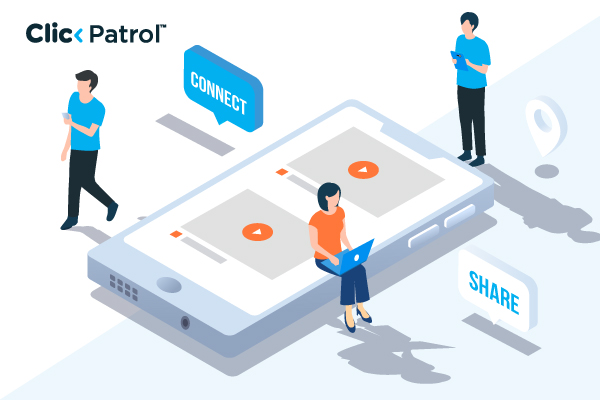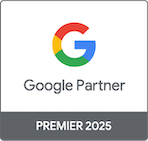
The Criteo logo: What it represents and why brand identity matters in Ad tech
Abisola Tanzako | Jul 30, 2025

Table of Contents
- Understanding the Criteo logo: Simplicity, typography, and symbolism
- Dissecting the Criteo logo: Key design features
- What the Criteo logo communicates to advertisers and consumers
- Criteo logo as a strategic brand tool
- Where you will see the Criteo logo
- Criteo logo vs. competitor logos: Brand differentiation
- Logo design lessons from Criteo
- Deep dive: Visual identity across media
- Case study: Criteo's logo as a catalyst for brand visibility
- The strategic value of the Criteo logo
- FAQs
Strong branding can increase brand recognition by 80% and drive customer loyalty (Lucidpress, 2024). The $1.2 trillion global digital ad spend industry by 2026 underscores the importance of branding in capturing attention and building trust.
A logo is more than design; it is the pivot of a brand’s narrative that shapes perception across media and the public.
For Criteo, a global leader serving 22,000+ marketers, its logo embodies the convergence of data intelligence, digital innovation, and personalized customer engagement.
Designed to reflect the company’s emphasis on AI-powered performance marketing, the Criteo logo is not just a mark but also a strategic identity tool that aligns with the company’s purpose to drive commerce outcomes at scale.
This article analyzes the design of the Criteo logo, its branding strategy, and why a consistent identity is vital in the ad tech space.
Understanding the Criteo logo: Simplicity, typography, and symbolism
Criteo’s logo has evolved to reflect its growth. The original 2005 design featured a simple, functional look typical of early tech startups, but lacked emotional appeal.
In 2017, Criteo rebranded with a modern, custom sans-serif font and introduced a signature orange curve between the “C” and “o,” symbolizing connection and innovation.
This redesign marked the company’s maturity, striking a balance between clarity and a more distinct, global identity.
Dissecting the Criteo logo: Key design features
They include:
1. Typography
- The Criteo logo uses a simple sans-serif font that is specifically designed to be unique. The font is the combination of technology-based precision and welcoming acceptability.
- The open loop of the “e” communicates flexibility and openness.
- Curved letterforms communicate innovation, movement, and imagination
2. Color scheme
- Orange is a key color for any brand, and Cretio’s use of orange is bold and symbolic.
- Orange: Communicates enthusiasm, creativity, and innovation at lightning speed.
- Gray/Black (appears in secondary interpretations): This color combination provides contrast, professionalism, and balance.
3. The curved connector line
- This curved line, curving from the “C” to the “o,” is the most defining visual element of the Criteo logo.
4. Symbolism
- Emblems of connection: of data, devices, humans, and results.
- Signals cyclical movement: with data loops and retargeting algorithms.
- Confers a sense of continuity and flow, confirming the brand’s seamless ad solutions.
What the Criteo logo communicates to advertisers and consumers
The Criteo logo is a sleek, modern design that subtly communicates the company’s core values and business goals to both advertisers and consumers. Here’s what it conveys:
- Innovation and technology: The logo’s clean, minimalist typography and the distinctive orange curved line (or “connecting arc”) suggest Criteo’s emphasis on being a cutting-edge advertising technology company. It shows that Criteo operates in the digital space, delivering performance-driven solutions.
- Connection and personalization: The curved line that links the letters in the logo, usually connecting the “c” to the “e,” represents connectivity and flow. For advertisers, this visual metaphor suggests that Criteo can help connect brands with consumers seamlessly and intelligently, using data-driven personalization.
- Simplicity and clarity: The sans-serif font gives a sense of clarity and modernity, reinforcing that Criteo offers streamlined, straightforward advertising solutions. This appeals to both advertisers looking for user-friendly platforms and consumers expecting relevant, non-intrusive ads.
- Trust and approachability: The orange color communicates energy, creativity, and friendliness. It positions Criteo as a dynamic yet approachable partner in the advertising ecosystem, one that advertisers can trust to amplify reach and performance, while also ensuring that consumers won’t perceive it as intrusive.
Criteo logo as a strategic brand tool
Criteo’s logo is not so much a design; it is a strategic brand asset leveraged to build credibility, familiarity, and authority.
1. Consistency across touchpoints: From the mobile app to digital ads, presentations to trade show booths, the Criteo logo appears in similar guises. Consistency builds recognition.
2. Alignment with business goals: The visual identity supports key messaging:
- Precision advertising
- Global scalability
- Machine learning excellence
3. Emotional resonance: Even though the company belongs to a data-driven sector, the logo appears human and vibrant. This makes Criteo relatable to both technical and non-technical stakeholders.
Where you will see the Criteo logo
Places where the Criteo logo can be seen include:
1. On-screen
- Product dashboards
- Client portals
- Online advertising campaigns
- Social media banners
2. Print and merchandise
- Branded swag (bags, shirts, pens)
- Company reports
- Business cards
3. Events and conferences
- Booth banners
- Presentation slides
- Digital signage at global marketing events
Criteo logo vs. competitor logos: Brand differentiation
What sets Criteo apart is its use of orange and the signature curved connector, which is not found in any competitor logo, making it immediately recognizable.
- Criteo: Criteo’s logo features a curved, minimalist design with a bold orange color. The signature curve between the “C” and “o” represents connectivity and innovation, aligning with the brand’s focus on innovative, data-driven marketing solutions.
- Google Ads: The Google Ads logo features a combination of blue and green in a triangular shape. Its clean, simple design emphasizes accessibility and ease of use, reflecting Google’s broad user base and straightforward advertising tools.
- The Trade Desk: This logo takes a strong, typographic approach in blue and white. The clean, solid lettering communicates transparency, stability, and strength qualities that position The Trade Desk as a reliable platform for serious advertisers.
- Meta Ads: Meta’s advertising arm features an infinity loop in blue, symbolizing virtual connection and an expansive vision for the future. The logo aligns with Meta’s broader emphasis on digital transformation and interconnected experiences.
- Adobe Advertising: Adobe’s logo is bold and angular, using red and black to project creativity and power. The design reinforces Adobe’s identity as a leading force in design and multimedia tools, with a confident, professional edge.
Logo design lessons from Criteo
They include:
- Ensure not to forget curves: Curves symbolize connection, flow, and movement, ideal for tech firms that value integration and seamless user experiences.
- Harness the power of color psychology: Orange speaks to energy, innovation, and optimism, making it an excellent choice for a forward-thinking, dynamic brand like Criteo.
- Balance simplicity and distinctiveness: A clean, unobtrusive logo can still be remembered if it’s distinctive in some way. Criteo’s line connector is a great example.
- Sync visuals with your mission: Every element should support your core values. Criteo’s curve of connection represents data, retargeting, and frictionless digital interaction.
- Develop emotional connections: Visuals should engage users on an emotional level, provoking trust, reliability, and innovation.
Deep dive: Visual identity across media
Criteo surpasses the logo. Its visual brand consists of:
- Iconography: Slim, rounded shapes and line icons.
- Typography: Basic, digital-font-based fonts like Proxima Nova.
- Imagery Style: Diverse individuals, mundane contexts, trade-related imagery.
- Motion Design: Humble animations that emphasize slick user journeys.
Case study: Criteo’s logo as a catalyst for brand visibility
As Criteo expanded from a French startup to a global AdTech leader, its brand presence lagged in key markets, most notably in the U.S. To address this gap, Criteo undertook a strategic logo redesign and refresh, aligning with its 2014 IPO.
The goal was to create a visual identity that reflected its coming-of-age, global presence, and leadership in innovation and performance marketing.
The new logo was applied consistently across investor collateral, marketing initiatives, digital channels, and trade shows. Consistency across multiple channels reaped huge rewards in terms of user recognition and trust. The result was stunning:
- 77% improvement in brand visibility
- 121% increase in lead generation conversion rates
- 602% rise in social engagement
These findings confirmed the power of a modern, cohesive logo in communicating Criteo’s market visibility. As more than just a design tool, the Criteo logo became an organizational asset, representing trust, inspiring conversation, and solidifying its place within the global commerce media landscape.
The strategic value of the Criteo logo
Criteo’s logo is a perfect representation of how innovative design can differentiate a brand in a dense, data-driven business. It is not only a design, it is a strategic asset that reflects Criteo’s mission to connect people, data, and commerce at scale.
In its clean typography and bold orange swoop, the logo reflects the spirit of innovation, movement, and digital connection critical to Criteo’s value proposition.
Since its redesign in 2017, the logo has helped provide brand consistency across more than 90 countries, from mobile dashboards to global conferences. It has helped drive visibility, engagement, and trust in a complex digital advertising ecosystem.
FAQs
Q. 1 What does the curved line in the Criteo logo symbolize?
It signifies connection, data flow, and adaptive cycles, aligning with Criteo’s technology-driven solutions.
Q. 2 When was the new Criteo logo released?
The new logo was introduced in 2017 to coincide with Criteo’s new mission.
Q. 3 Why is orange chosen as the base color in the Criteo logo?
Orange represents energy, creativity, and innovation, making it the perfect choice for a future ad tech firm.
Q. 4 Why is the Criteo logo so different from others?
Its connector line, custom typography, and intense colors make it strikingly memorable.





